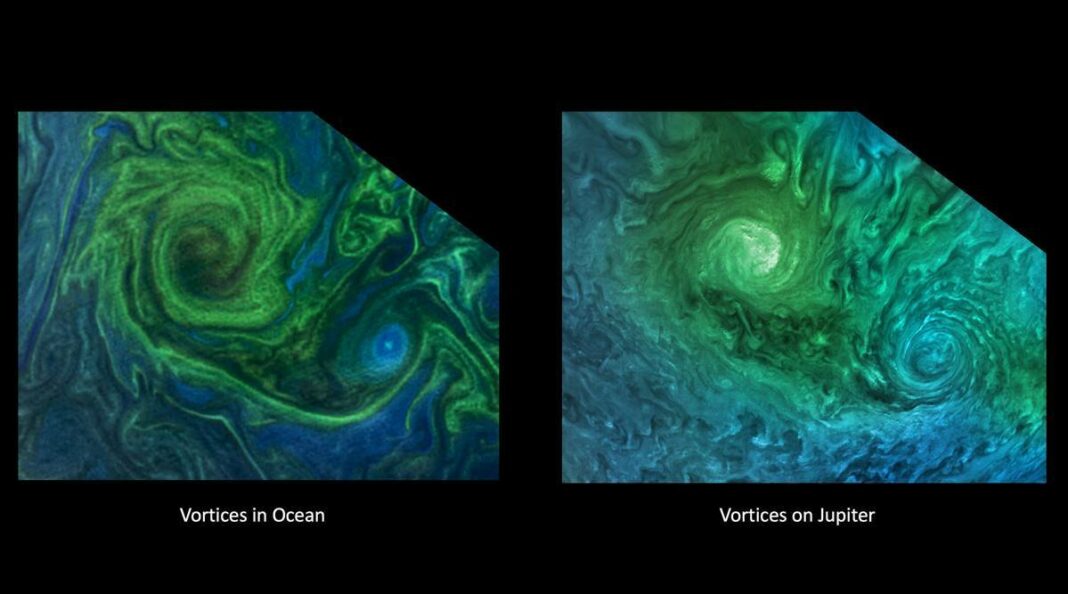Last week, NASA released an audio track collected by its Juno spacecraft as Ganymede, one of Jupiter’s moons, made a flyby. Ganymede is the largest moon in our Solar System.
The 50-second audio track was generated from data collected by Juno’s Waves instrument on June 7, 2021. The electric and magnetic radio waves were shifted into audio range to create the track.
“This soundtrack is just wild enough to make you feel as if you were riding along as Juno sails past Ganymede for the first time in more than two decades,” said Juno Principal Investigator Scott Bolton of the Southwest Research Institute in San Antonio said in a release. “If you listen closely, you can hear the abrupt change to higher frequencies around the midpoint of the recording, which represents entry into a different region in Ganymede’s magnetosphere.”
 This image of the Jovian moon Ganymede was obtained by the JunoCam imager aboard NASA’s Juno spacecraft during its June 7, 2021, flyby of the icy moon.
This image of the Jovian moon Ganymede was obtained by the JunoCam imager aboard NASA’s Juno spacecraft during its June 7, 2021, flyby of the icy moon.(NASA/JPL-Caltech/SwRI/MSSS)
At the time of this closest approach to Ganymede, Juno was 1,038 kilometers away from the moon’s surface and was traveling at a relative velocity of 67,000 km/hr.
Last week, a briefing on NASA’s Juno mission to Jupiter was held at the American Geophysical Union Fall Meeting in New Orleans. During the meeting, Jack Connerney from NASA’s Goddard Space Flight Center in Greenbelt, Maryland, revealed the most detailed map ever obtained of Jupiter’s magnetic field. It was compiled using data collected from 32 orbits by Juno.
The map provides new insights into the Great Blue Spot, seen at Jupiter’s equator. The map shows that Jupiter’s zonal winds are pulling this Great Blue Spot apart and this could mean that the zonal winds seen on the planet’s surface could have reached deep into the interior of the planet.
The Juno team also released the latest image of Jupiter’s faint dust ring. The image was taken using Juno’s Stellar Reference Unit navigation camera. The image also captured the arm of the Perseus constellation. “It is breathtaking that we can gaze at these familiar constellations from a spacecraft a half-billion miles away,” said Heidi Becker, lead co-investigator of Juno’s Stellar Reference Unit instrument at NASA’s Jet Propulsion Laboratory in Pasadena. “But everything looks pretty much the same as when we appreciate them from our backyards here on Earth. It’s an awe-inspiring reminder of how small we are and how much there is left to explore.”
